#alana haim might be the love of my life but this video is all danielle and I love her in it
Text
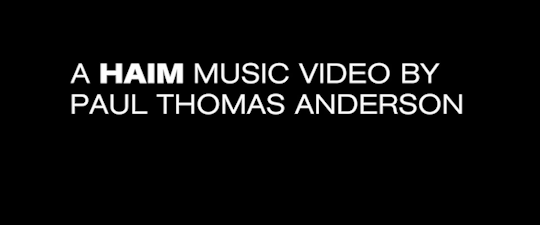


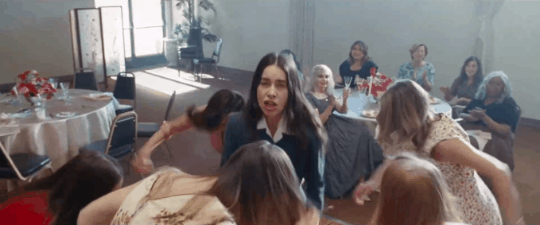

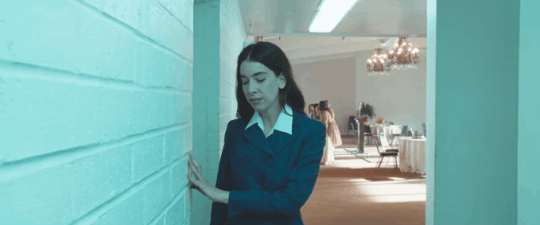
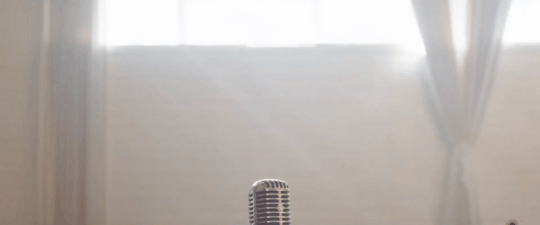

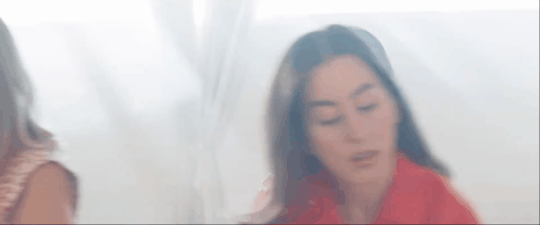
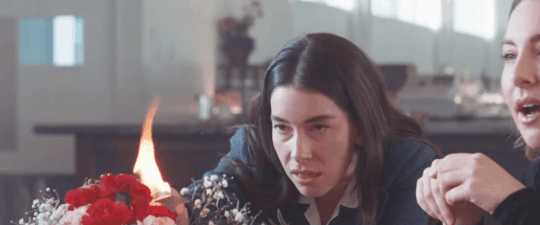
Lost Track by Haim
directed by Paul Thomas Anderson
#this is my first attempt at making a gifset#I am unhealthily obsessed with this song and video#alana haim might be the love of my life but this video is all danielle and I love her in it#also I love este's little pose in the second gif#haim#haimtheband#lost track#paul thomas anderson#alana haim#este haim#danielle haim#licorice pizza#gifset#music#indie pop#indie rock
6 notes
·
View notes
Text
Darren Criss and Este Haim’s Friendship Takes Center Stage on That Thing I Do
On their new podcast, the musician-actors are picking the brains of fellow creatives about the passions that fuel and define them.
Darren Criss and Este Haim may have named their podcast That Thing I Do after the mid-’90s movie close to their hearts—That Thing You Do!, about the rise and fall of a fictional rock band—but there’s another film that seemed to loom just as large when creating their show.
“I think we’re like, slightly obsessed with the Sliding Doors moment,” Haim told Vanity Fair, referencing the 1998 rom-com that follows Gwyneth Paltrow’s character down two divergent timelines. “If you’re so incredibly passionate about multiple things, what is the thing? What is the event? Was there an event that made you kind of pivot and just go left instead of going right at that fork in the road?”
That pivotal crossroads is just one of the topics that Criss and Haim are eager to delve into on their show. Produced by Cadence13, That Thing I Do is a friendship-fueled quest to understand the passions, past and present, that have shaped the careers of other multi-hyphenate artists (Criss is an actor with a background in music, and Haim is a musician with roots in theater). In addition to lengthy, intimate conversations with celebrities including Carly Rae Jepsen, Evan Rachel Wood, and Reggie Watts, That Thing I Do mines Criss and Haim’s insatiable curiosity for all things creative to produce episodes that are as unpredictable as they are delightful.
As hosts, Criss and Haim tear through each episode like tornados: Accents are adopted, sentences are sung, and movie references and inside jokes fly hard and fast. Criss is a verbose, hyperkinetic storyteller, quick with a self-deprecating comment or quippy aside, and Haim is eager and unselfconscious, with a palpable enthusiasm for every guest and every possible subject. It quickly becomes clear that this is one of those friendships where the participants seem to more or less share a brain; where one can riff off the other, seemingly in perpetuity, about any number of topics without ever getting bored. And when a pair of celebrities find themselves so simpatico—especially a duo as funny and game as these two—what are they supposed to do? Not start a podcast?
That was more or less Haim’s thinking, after she and Criss started logging lengthy FaceTime calls during the pandemic that she increasingly felt would be entertaining to a wider audience. Criss, however, was more reluctant to start recording their conversations: “I said no so many times,” he said. “I really felt like I didn’t have time. But Este wore me down.”“I am pretty relentless when I want to do something,” said Haim, grinning.
Haim, one-third of the eponymous rock band Haim, experienced her own “Sliding Doors moment” in her late teens, when after years of theater and dance training, she chose to attend the University of California, Los Angeles, for ethnomusicology, instead of pursuing drama programs at Carnegie Mellon or New York University. Over 10 years later, with a slew of Grammy nominations under her belt, music videos directed by Paul Thomas Anderson, and a life spent performing alongside sisters Danielle and Alana, there’s no question that Haim loves what she does, and takes it seriously. “I try to work at my craft every single day,” said Haim. “So at least I have that. I definitely try to stay creative every single day. If it’s not me writing lyrics, it’s me, you know, singing ideas into my iPhone.” But she’s still open about a “hunger” for acting and dance that she feels is still important to nourish, however and whenever she can. She reminisces about taking an improv class at the Upright Citizens Brigade in 2017, and her love of the Suzuki and Viewpoints methods of acting, both movement-based techniques that draw on an extreme awareness of the body. She claims she still interrogates actor friends about their experiences working in avant-garde theater (she charmingly calls these conversations “offline podcasts”).
Haim’s passion when talking about physical theater surprises even Criss: “We’ve talked a lot about stuff, but we’ve never really talked about [Suzuki],” he said. “I want to talk about that in the podcast, because we get to learn new stuff about each other every week.”
That real-time revelation speaks directly to Criss and Haim’s goal with That Thing I Do—to create a space where artists can speak to all parts of themselves, and bring previously unknown or underappreciated areas of passion and skill to light. “One of the things that I always love finding out about artists who I think are so incredible in one field is that there’s usually a seed somewhere else that is just as potent,” said Criss, citing recent interviews with Thundercat, in which the musician revealed his background in visual art, and Maya Rudolph, who majored in photography at University of California, Santa Cruz, before becoming a Saturday Night Live all-star, as prime examples. “Having an artistic spirit is by its nature very amorphous. It usually comes with a lot of roots that go other places.”
That interconnectivity of talents is something that Criss, an Emmy– and Golden Globe Award–winning actor (The Assassination of Gianni Versace: American Crime Story) deeply relates to. As he describes it, each thread of his creative expression is inextricably linked to the other: “When I’m acting, I’m composing music, the way that dialogue is put together has rhythm, cadence, speed, tone, pitch,” he said. “There’s things that are very musical and compositional about the way that you deliver dialogue. So to me, it’s all kind of the same stuff. It’s all one body of water that can take different shapes.”
That’s not to say he hasn’t wondered what his life might have been like had he prioritized one of his skills over another at a certain time, imagining his own Sliding Doors plotline. “I often wonder what would have happened if, when I was 22 and I was getting attention from major labels and acting wasn’t happening, music was happening—would I have been a Shawn Mendestype?” said Criss. “But I don’t mind the expense that I’ve paid in not doing those one things, like, volumetrically. I now have a collection of a lot of things that have lower visibility, but higher passion and gratification.”
To that point, That Thing I Do doesn’t dwell too much on the could-have-beens and what-ifs, as tempting a thought exercise as it may be. He and Haim are more interested in finding the common threads between their own experiences and that of other creatives, and seeking the “why” behind the artistic choices their peers have made. Haim also reveals a less lofty, ulterior motive behind the pod: “This was also our evil plan to make new friends.”
And while both multi-hyphenates may have just added yet another commitment to their already very full plates, both appear energized by their newfound vocation as hosts—and to have a dedicated space to simply shoot the shit with each other. “I think we’re just getting started,” said Criss. “And I think Este would say the same.”
42 notes
·
View notes
Video
youtube
HAIM - NOW I'M IN IT
[7.54]
Hard times...
Ian Mathers: Sometimes adulthood feels like the process of realizing you've been "trying to find [your] way back for a minute" for years now. Part of that is that you can never get back (to fewer responsibilities, a younger body, a less complicated life) and part of that is that you don't need to because you've grown in ways you didn't expect or notice and part of that is just that feeling like you're in it is just the condition of being an adult (at least here and now). Of course, Danielle Haim has said the song is about depression. I'm not the only person I know for whom adulthood and depression seem inextricable.
[8]
Wayne Weizhen Zhang: Like grey clouds drifting slowly overhead, depression can manifest itself gradually. You may not even notice it happening. That is, until it's too big to ignore: suddenly, there's an underlying sadness that keeps popping up, and you're too anxious to reach out to others, too unhappy to look in the mirror, too tired to leave your apartment. You're just in it. "Now I'm In It" perfectly captures the moment you realize this -- and while so many songs that discuss mental health can seem condescending or sloganeering, the introspection that Haim does here is genuinely powerful. This is art about depression without wallowing, set to an undulating guitar rift that recalls the strength of "Dancing on My Own." At face value, "Damn I'm in it/ And I've been tryna find my way back for a minute" sounds so simple as to be mundane, but to me, it feels like liberation that can only come from being honest with yourself. Every time I hear it, it feels like air in my lungs, sunshine on my skin. There's a moment during the music video (at 3:20) when, after making it through a shit day, Danielle Haim musters the energy to go out with her sisters. As they cross the street, drums beat triumphantly and a sample of what sounds like cheering plays -- and then, inexplicably, she breaks the fourth wall, shooting a glance directly into the camera, almost like she's looking directly at her depression and giving it the side eye. I have yet to give a 10 since starting to write for TSJ, but that moment alone merits my first one.
[10]
Michael Hong: Perhaps the best shot of the music video is the one in which Danielle Haim goes through a car wash, but the most emblematic is likely the penultimate one, where she downs a shot, grimaces and takes one breath. The song is its "before image," a tightly wound version of Danielle Haim over a tense guitar that feels synthetic as it pulses across the track. As it progresses, Danielle loosens up and regains some of that confidence symbolic of Haim. The instrumental also gradually shifts, focusing more attention on other more organic elements. The piano line on the bridge allows her to take stock of her surroundings, backed in harmony by her sisters, but it's those drums on the last chorus that deliver the track's final moment of catharsis. Like depression, that guitar vamp remains, but Haim push it to the background, mostly stopping it from overpowering themselves. It's Danielle Haim, defiantly rejecting depression and taking back control for what feels like that penultimate shot -- the ability to finally breathe after a particularly difficult episode.
[8]
Isabel Cole: If it hadn't been for Danielle Haim's Instagram post, I probably wouldn't have known to read this as a song about mental health. But once I saw that it made an immediate intuitive sense: the anxious thrumming that won't relent even as the melody opens up in the chorus, stumbling-fast lyrics sketching a harried picture of isolation, an atmosphere of panic and dread like pacing restlessly in a room you can't make yourself leave. The sigh of regret in the bridge, the dawning realization that you can no longer deny. I've spent a lot of hours looking for something I knew I wouldn't find in mirrors, too. Haim build a gorgeous encasement for the sentiment, lush and textured and perfect, actually, for listening to on repeat on a long walk taken trying to get a little further back to yourself; I particularly love the moment the second verse starts and everything deepens and opens at once. Would love this even if I weren't spiritually obligated to give at least a [7] to any song that closes by layering one of its parts over the other.
[9]
Alfred Soto: Whenever they use a skittering rhythm track that forces them into breathlessness, I swoon, but then I liked but then Something to Tell You more than most. The ghost of "I Love You Always Forever" haunts -- will Haim's next album study their idea of '90s-ness?
[7]
Will Adams: Haim, always ones to wear their references on their sleeves, take their soft-rock aesthetic to the extreme by synthesizing "I Want You" and "I Love You Always Forever." Those choices alone make "Now I'm In It" great, but Danielle using her signature patter to evoke racing thoughts is the cherry on top. The verse barges in by the second chorus, words tumbling over each other resulting in sensory overload. And then, finally, gloriously, the bridge arrives, when everything falls away and a moment of clarity is reached. The ensuing chorus is the same as it was, but now it feels assured, confident amidst the chaos. "Now I'm In It" is a song about going through it that goes through it.
[8]
Tobi Tella: The frantic, almost falling-on-top-of-each-other speed of the lyrics is the real secret of the song -- it puts the listener on edge from minute one. I wish it built to more in certain ways, but I think the tension with such little release feels deliberate -- I feel like I'm still in it too.
[7]
Kylo Nocom: Never trust a man who will gleefully scrutinize a Haim track's influences as a marker of unoriginality and yet ignore any accusation you throw at LCD Soundsystem. "Now I'm In It" bubbles, springs, and thrusts forward until the sisters reach a bridge that would make Vampire Weekend circa Modern Vampires proud.
[8]
Oliver Maier: Rostam and Rechtshaid's production team-up unsurprisingly results in shades of the bleary, melancholic sound of Modern Vampires of the City, notably in the bluesy piano, ambient noise and thudding drums that filter in after the second chorus. That moment also happens to be the point at which Haim often run out of ideas (even in their best songs) and resort to padding out the remainder of the track with repetition upon repetition to the point of indulgence. Here they're more economical, more conscientious of the song's arc, and the final chorus feels earned rather than copy-pasted as a result. A shame that said chorus is not quite as catchy as they're capable of, though "I can hear it/But I can't feel it" is as succinct and lovely a lyric about depression as has ever been penned.
[6]
Jacob Sujin Kuppermann: "Now I'm In It" turns the corner well-- that slowdown after the two-minute mark, when the piano and harmonies come in and the fervent pulse of the rhythm guitar stills a little, is genuine catharsis. But the rest, both before and after, feels nervy and formless. Danielle remains a great pop vocalist, but the words she sings are sketches and the beat below it sounds like something Katy Perry and Zedd would've thrown out earlier this year.
[5]
Thomas Inskeep: The song throbs and thrums, yet the Haim sisters just sound bored, and I'm unmoved. Actually, worse than unmoved: I'm annoyed.
[3]
William John: While the track motors along behind her, Danielle Haim here breathlessly corkscrews her way through the awful, disenfranchising inertia that most of us are prone to from time to time. When paired with preceding single "Summer Girl", "Now I'm In It" seems to indicate that a central theme of Haim's putative third album will be the power of the collective in providing a fulcrum for those experiencing trauma. Though the lyric sheet suggests the protagonist remains in the widening gyre, the music video powerfully reinforces the notion that help is always available, even when it seems like it isn't. And maybe the gyre remains, but maybe also, with others around to lend a hand, it might stop widening, or even get a bit narrower. Haim have always been about "the sisterhood," in the most literal sense, but the image of Este and Alana, scuttling down a street and carrying Danielle on a stretcher, nursing her through the rut, might be their paradigm illustration of that concept.
[9]
Kayla Beardslee: In the past month or two, as I've built up enough reviews to start referencing my past scores as a consistent standard, I've latched onto two regrets over too-low scores. One of those regrets is "Summer Girl": I was initially impressed and gave it an 8, but as the song kept growing on me in the following weeks, I realized I loved it enough to be a 10. The brilliance of Danielle Haim's restrained vocals, the quiet intensity of the lyrics, the sax riff that carries it all along -- it was quickly becoming my favorite Haim track. Well, the good news is that I was wrong: "Summer Girl" is still an 8 or 9. This is a 10. "Now I'm In It" sounds, somehow, both clean and impossibly hazy. The production is mixed clearly, but allows each bouncing bass note and subtle sound effect to shine; in contrast, Danielle's voice, as impressively agile as ever, folds itself into reverb and whispered backing vocals. Even the fuzz of static in the background of the bridge feels like purposefully crafted chaos. The sisters have said that the song is about Danielle's struggle with depression, and the lyrics reinforce that idea of being stuck in a mental fog. Like the bridge of "Summer Girl," the heart of "In It" boils down to a specific moment: in this case, it's when Danielle sings, full of longing, "And the rain keeps coming down along the ceiling/And I can hear it/But I can't feel it." I love that line, not only because it's absent from the first chorus and comes as a total surprise in the second, but because of how well it works as a metaphor on two levels. Being numb to "the rain" can signify detachment from the outside world, but it can also mean refusing to acknowledge your own depression: this track is smart and detailed enough to express both. And yet the music itself is a rejection of the lethargy of depression. With layers of instrumentation being constantly added and dropped, each section of the song is unique, and all of it builds up to that forceful, cathartic final chorus. In a lesser song, this clear sense of musical growth working against the stagnant nature of the lyrics would feel contradictory, but here, it feels instead like an intentional message of hope. Things will change, even in the storm -- and, if "Now I'm In It" is any indication, Haim will only keep getting better.
[10]
[Read and comment on The Singles Jukebox]
1 note
·
View note